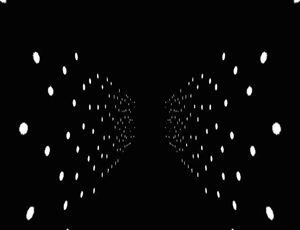College of Health and Rehabilitation Sciences, Sargent College: Daniel E. Young, Robert C. Wagenaar, Cheng-Chieh Lin, Ying-Hui Chou, Elliot Saltzman
Department of Psychology: Sigurros Davidsdottir, Alice Cronin-Golomb
Introduction
Researchers in Sargent College are using head-mounted displays (HMDs) to study the effect of Parkinson’s disease (PD) on walkers’ gait.
A shifted field of view, an altered perception of optic flow speed, and gait asymmetries may influence heading direction for Parkinson’s disease patients. In a study by researchers in the College of Health and Rehabilitation Sciences: Sargent College, PD participants and healthy control participants walked a virtual hallway in which the optic flow speeds of the walls varied. Three-dimensional kinematics showed participants veered away from the faster moving wall. Although veering normally occurs toward the side with smaller step length, in both left side onset (LPD) and right side onset (RPD) this bias was overridden by a shifted field of view, which caused veering in the opposite direction, toward the side of the brain with more basal ganglia damage.
RCS Contribution
RCS staff members Erik Brisson, Robert Putnam, and Katia Oleinik assisted in the programming and deployment of the virtual hallway.
More Information
See a paper by the authors in the November 2010 issue of Vision Research Reviews.

